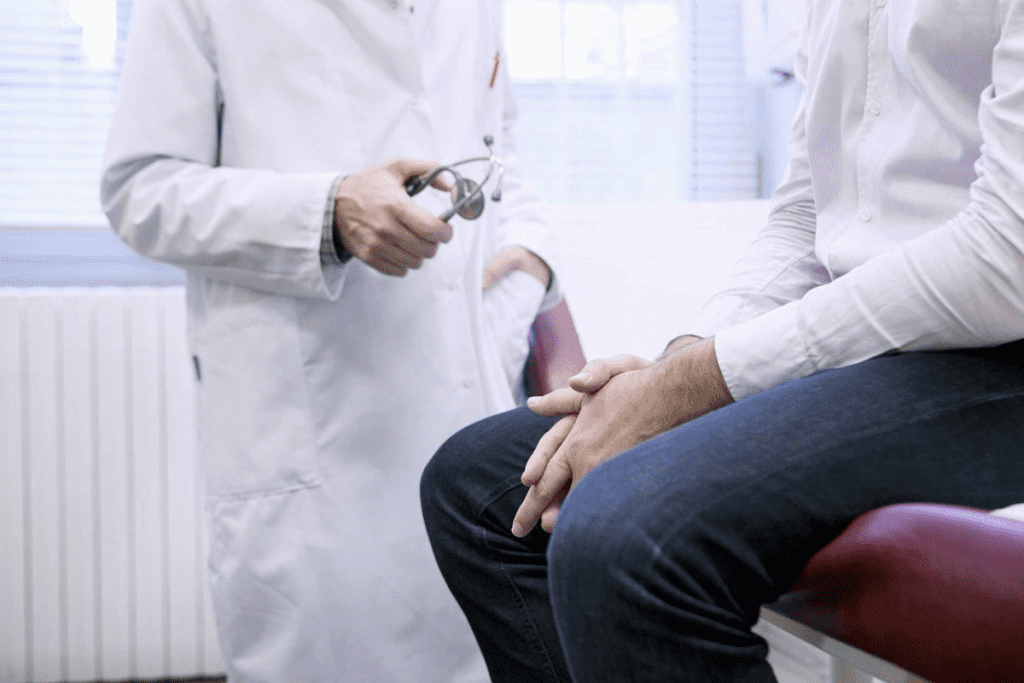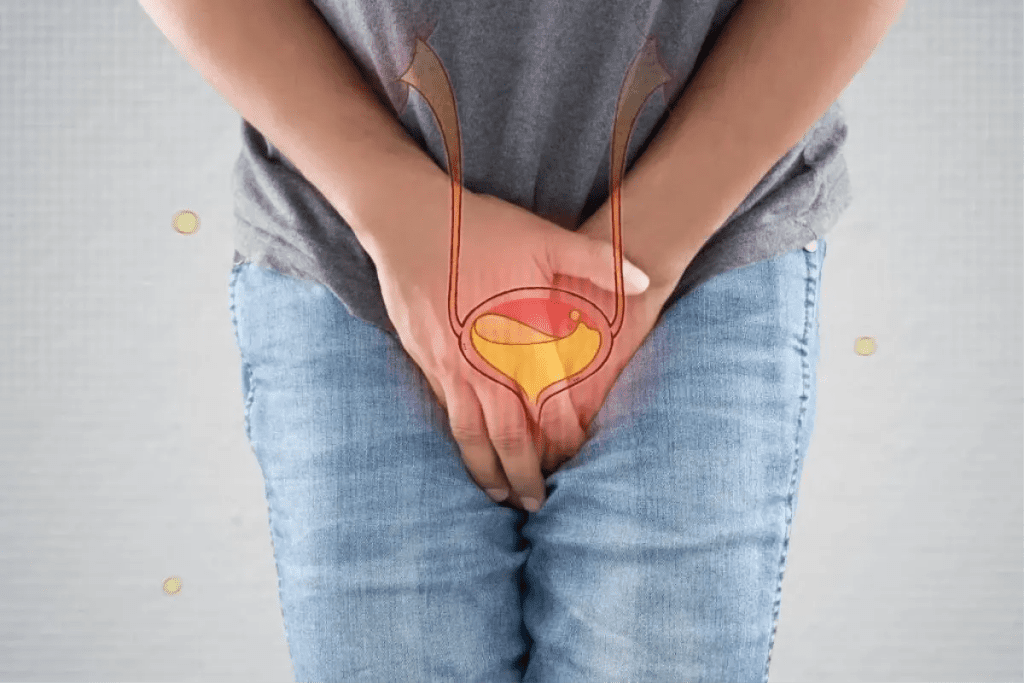Last Updated on November 25, 2025 by
Transurethral resection of the Prostate TURP (TURP) is a common surgery for urinary issues due to an enlarged prostate. It’s usually effective but can cause several complications.
At Liv Hospital, we know how important it is to know about these possible issues. Three common complications after a TURP are urethral stricture, bladder neck contracture, and urinary tract infections (UTIs).

About 17% of patients experience complications within a year after TURP. We aim to offer top-notch healthcare with full support for international patients.
The TURP procedure helps with urinary problems caused by an enlarged prostate. At Liv Hospital, we follow advanced protocols and high standards. This ensures our patients get the best care.
Transurethral Resection of the Prostate (TURP) removes parts of the prostate gland through the urethra. It’s a less invasive option compared to open surgery. TURP helps relieve urinary blockage symptoms, improving life quality for those with BPH.

Studies show a 17% one-year complication rate after TURP. This highlights the need to know about possible risks. Most patients recover well, but knowing about complications helps in making care choices.
After TURP, patients might face issues like needing a catheter and bladder irrigation. These steps help prevent infection and aid healing. Our team at Liv Hospital works hard to reduce these risks with careful post-operative care.
It’s key for patients to understand TURP and its possible complications. Knowing the risks and benefits helps them prepare for surgery and recovery.
Urethral stricture is a big problem that can happen after a Transurethral Resection of the Prostate (TURP) surgery. We know how important it is to understand this to help our patients fully.
A urethral stricture occurs when the urethra gets narrower. This makes it hard for urine to flow properly. It can happen after TURP because of surgical trauma or infection.
Key factors contributing to urethral stricture formation include:
Research shows that 2.2% to 9.8% of people get urethral stricture after TURP. We know that things like how big the prostate is and how long the surgery takes can make it more likely.
Signs of urethral stricture include weak urine flow, straining to pee, and taking a long time to pee. We use tests like urethrography and cystoscopy to see how bad it is.
Diagnostic methods used include:
Treatment for urethral stricture can be simple or complex. We pick the best option based on how bad it is and the patient’s health.

We at our place are all about giving personal care to those with urethral strictures. We aim for the best results for our patients.
Bladder neck contracture is a serious issue after TURP. It causes the bladder neck to narrow, blocking urine flow. This can greatly lower a patient’s quality of life, making quick and effective treatment essential. Prostate TURP effectively treats enlarged prostate symptoms, improving urine flow, bladder control, and overall quality of life for patients.
Several things can cause bladder neck contracture after TURP. These include the surgery method, how much tissue is removed, and the patient’s age and health. The healing process can sometimes lead to scarring and narrowing of the bladder neck. Prostate TURP
Key factors contributing to bladder neck contracture include:
Research shows bladder neck contracture occurs in 0.3% to 9.2% of TURP patients. Several factors can raise the risk. These include prostate size, surgeon experience, and other urinary issues.
Knowing these risk factors helps identify who needs closer monitoring or different treatments.
Patients with bladder neck contracture may have trouble urinating, feel like they’re straining, or not empty their bladder fully. Doctors use a mix of clinical checks, uroflowmetry, and cystoscopy to diagnose.
Early diagnosis is critical for avoiding long-term damage and improving treatment results.
Treatment for bladder neck contracture depends on how severe it is. Prostate TURP Options include simple procedures like dilation or incision, or more complex surgeries for severe cases.
“The choice of treatment should be tailored to the individual patient’s condition and overall health status.”
Liv Hospital Urology Department
At Liv Hospital, we focus on personalized care for bladder neck contracture after TURP. Our team works with patients to find the best treatment plan, aiming for the best results.
Urinary tract infections (UTIs) are a big worry after Transurethral Resection of the Prostate (TURP) surgery. We at Liv Hospital know how important it is to handle this issue well. This ensures our patients get the best care possible.
Studies show UTIs after TURP happen in 1.7% to 8.2% of cases. This range shows we need more research on how to prevent them. A study in the International Archives of Urology and Complications says knowing these rates helps us improve care after surgery.
UTIs after TURP come from many sources. Bacteria from the procedure, catheter use, and urinary tract issues are some. We focus on using sterile techniques and managing catheters well to lower these risks.
Some patients are more likely to get UTIs after TURP. Prostate TURP These include those with past UTIs, diabetes, or weak immune systems. Knowing these risks before surgery helps us take steps to prevent UTIs.
UTIs after TURP can show up in different ways, from no symptoms to serious infections. We diagnose them with tests like urinalysis and urine cultures. Quick diagnosis and treatment are key to avoiding worse problems.
Understanding UTIs after TURP helps us give better care. At Liv Hospital, we aim to reduce UTI risks with proven methods and care tailored to each patient.
TURP is a common treatment for enlarged prostate issues. Prostate TURP Yet, it can lead to problems like urethral stricture and bladder neck contracture. It’s important to understand these issues to improve long-term results.
Thanks to new technology, TURP complications have decreased. At Liv Hospital, we use the latest tech to cut down on side effects. This ensures our patients get the best care during prostate resection.
We aim to provide top-notch healthcare with full support for international patients. By focusing on the latest medical advancements and putting patients first, we aim to lower complication rates. This way, we improve our patients’ quality of life.
TURP is a surgery for urinary problems caused by an enlarged Prostate TURP. It removes parts of the prostate gland through the urethra.
Common complications include urethral stricture, bladder neck contracture, and urinary tract infections (UTIs).
Studies show a 1-year complication rate of about 17% after TURP.
Urethral stricture is a narrowing of the urethra. It happens in 2.2-9.8% of TURP cases.
Bladder neck contracture narrows the bladder neck. It occurs in 0.3-9.2% of TURP cases.
UTIs are a big problem after TURP, affecting 1.7-8.2% of patients.
Treatments include dilation and surgery.
Treatments include surgery and minimally invasive methods.
Knowing the causes and risks helps prevent UTIs after TURP. Good care after surgery also helps.
Liv Hospital uses advanced protocols and high standards to reduce TURP risks. Our team offers full care and support to patients.
Subscribe to our e-newsletter to stay informed about the latest innovations in the world of health and exclusive offers!